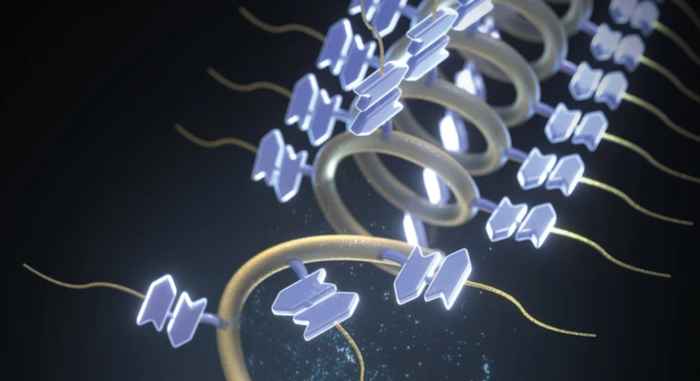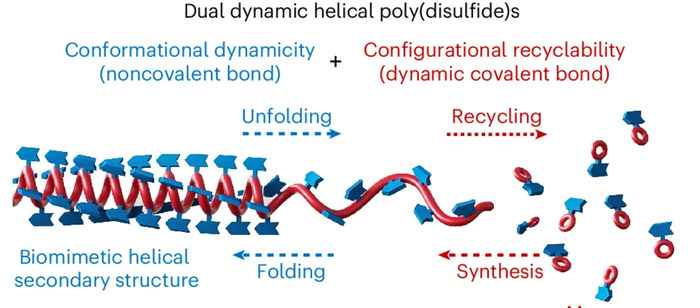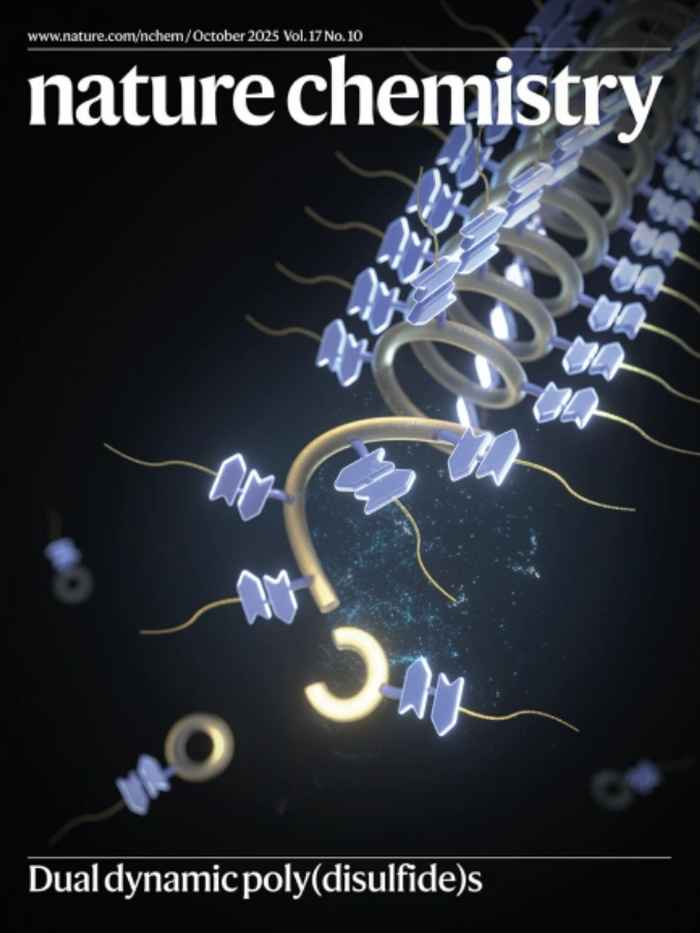Synthetic ‘foldamer’ mimics key properties of biopolymers
UvA researchers contribute with detailed analysis of its helical structure
9 October 2025

Biopolymers such as proteins and DNA are structurally very dynamic molecules, featuring a unique combination of properties. On the one hand, they can fold in various shapes so that they can perform a multitude of functions (conformational adaptivity). On the other hand, they can easily decompose into their molecular building blocks and, from there on, reassemble. This ‘configurational reversibility’ facilitates the chemical recycling that is essential for the circularity of life.
Constructed from biologically relevant units
For chemists, it is quite a challenge to design and realise a synthetic molecular system that mimics such key features of natural systems, featuring dynamic covalent bonds, structural folding and full recycling capabilities. Synthetic organic chemists at the group of Prof. Ben Feringa at the University of Groningen took on that challenge, and with success.

In the Nature Chemistry paper, they present a synthetic covalent ‘foldamer’ constructed from biologically relevant units (amino acids, disulfides) that can reversibly adapt between disordered and helical conformations and can recycle itself to the original small molecules. These biopolymer-like features arise from the subtle synergy of noncovalent bonds (H-bonds) and dynamic covalent bonds within a coupled chemical equilibrium. Further in-depth analysis uncovered an unconventional thermodynamic behaviour with non-zero heat capacity change, reminiscent of natural proteins.
Unique fingerprints of the helical structure
An important contribution to the analysis of the novel molecules was made by Wybren Jan Buma, Professor of Molecular Photonics at the University of Amsterdam’s Van ‘t Hoff Institute for Molecular Sciences, and Paul Nicu, one of his former postdoctoral researchers now working in Romania. They contributed to the work by recording and analysing Vibrational Circular Dichroism spectra.

Such spectra provide unique fingerprints of the helical structure of the polymer, but also the extent to which this helical structure persists. In combination with quantum chemical calculations these spectra allowed them to provide unambiguous evidence for the successful construction of the targeted poly(disulfide)-based helical foldamers. It also provided detailed information on the structural properties of these foldamers, such as how many monomers are involved in one turn of the supramolecular assembly.
Paper details
Qi Zhang, Valentin P. Nicu, Wybren Jan Buma, He Tian, Da-Hui Qu & Ben L. Feringa: Dual dynamic helical poly(disulfide)s with conformational adaptivity and configurational recyclability. Nat. Chem. 17, 1462–1468 (2025). DOI: 10.1038/s41557-025-01947-0